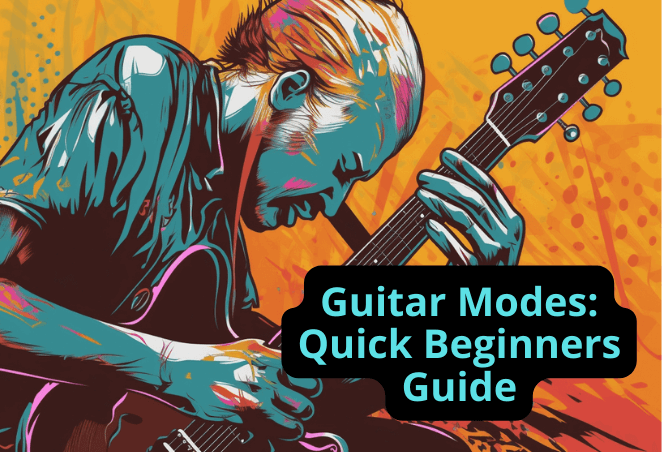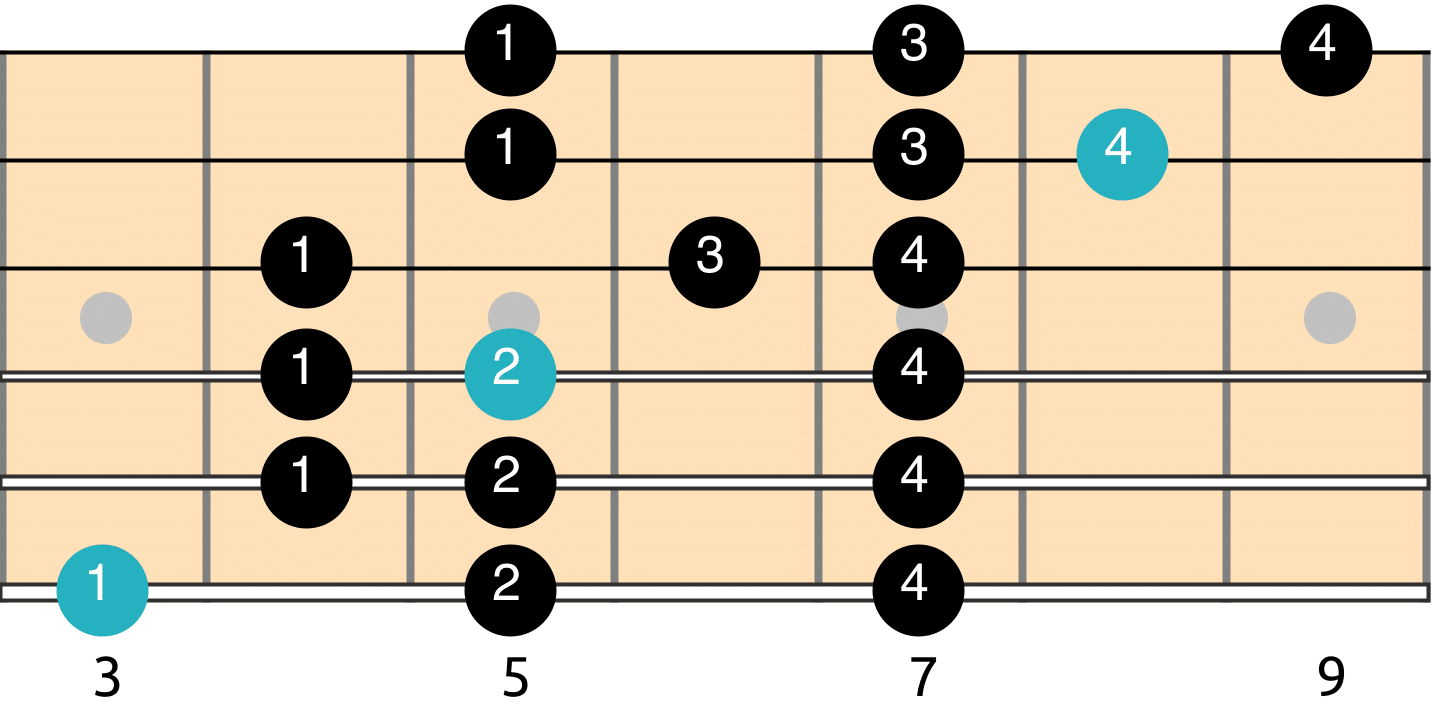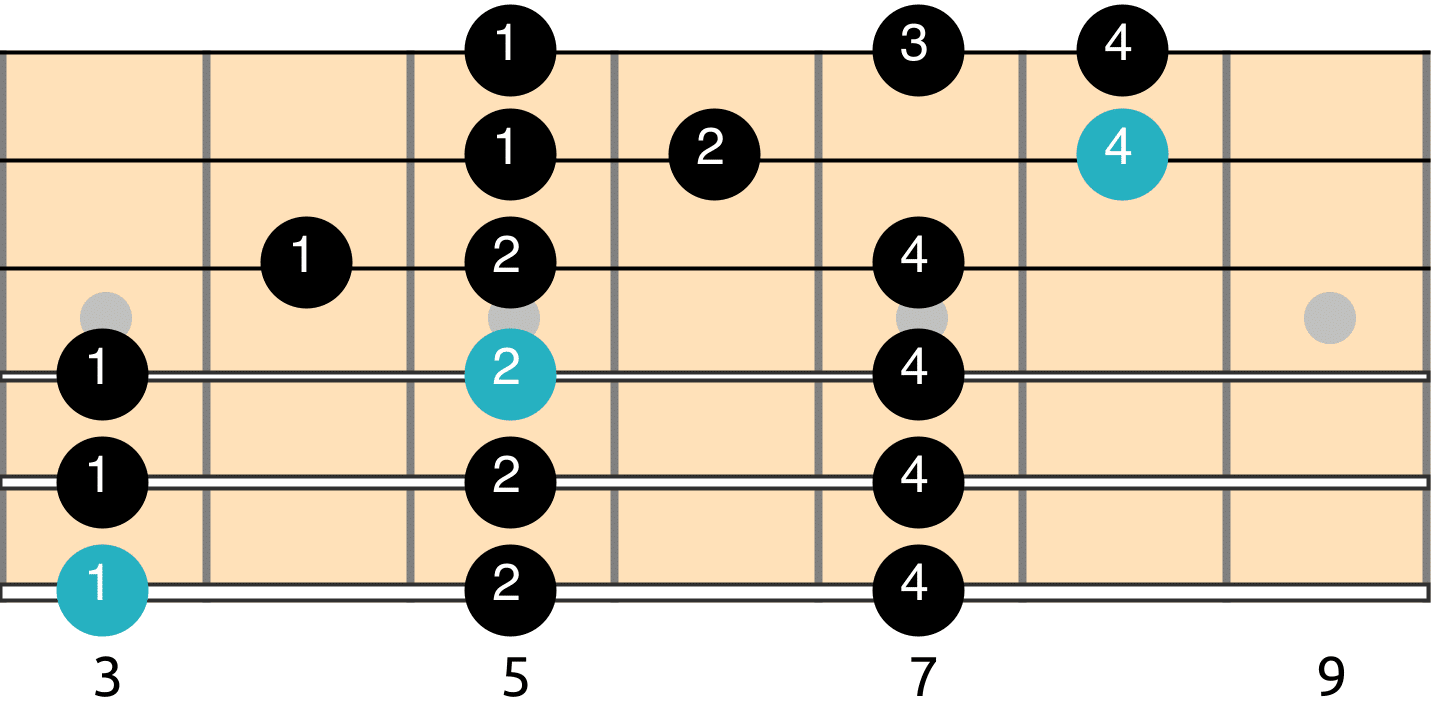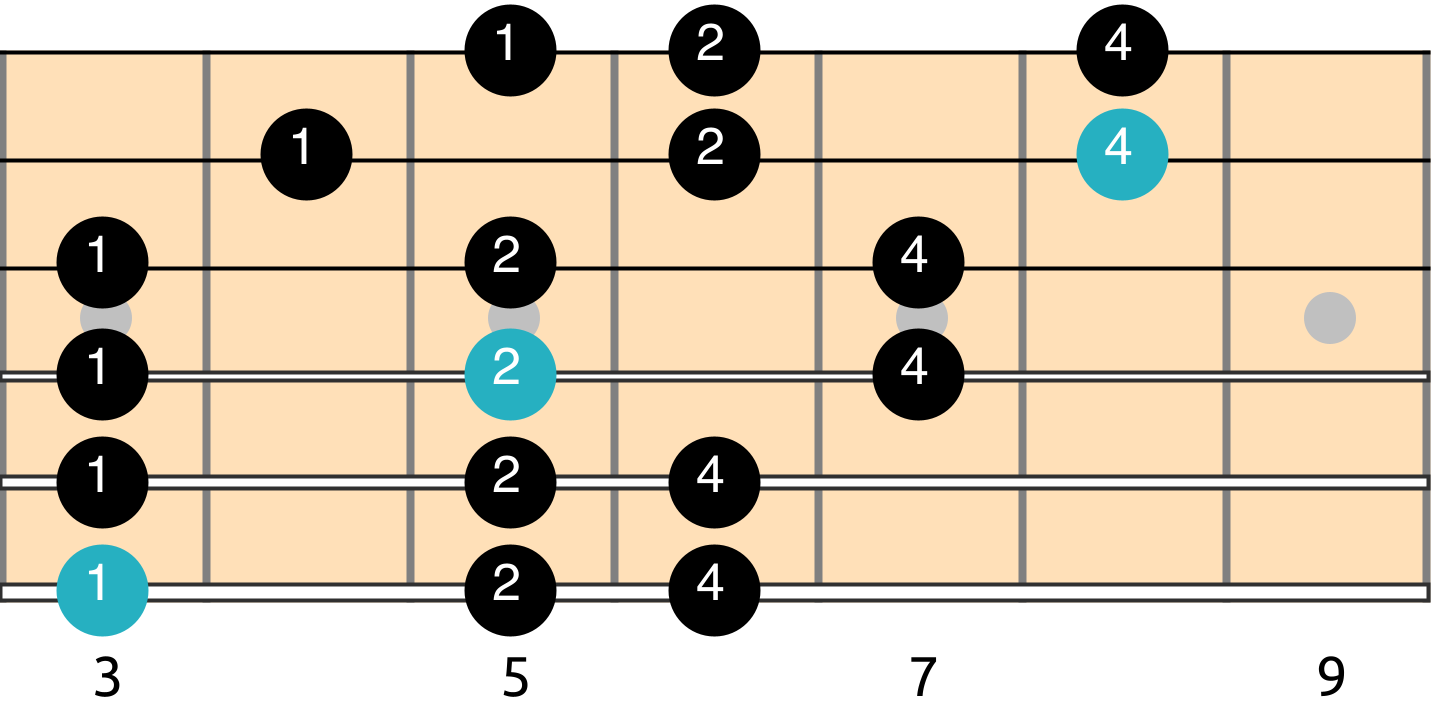Wondering how to break out of the pentatonic prison? In this article, we introduce you to scales and modes with tips for how to improvise on your guitar…
Picture this: You’re chilling at home, guitar in hand, practicing guitar scales, dreaming of the day when you can effortlessly jam with other guitar players or simply rock out on your own.
But here’s the catch: You find yourself stuck in the same old pentatonic scale runs, lacking the confidence to break free and truly improvise.
Well, fear not, my friend! The secret sauce to unlocking your improvisational skills is right here, and we’re about to dive headfirst into tips to help you improvise.
So grab your trusty six-string, get your favourite jam tracks ready, and prepare to unleash your inner guitar hero!
How Can Improvisation Make You a Better Guitar Player?
If you’ve ever dreamed of coming up with your own guitar melodies, licks and solos on the spot, improvisation is the skill you need to master.
Improvisation is the art of making music on the spot without following a script or a score. It’s about expressing yourself, exploring new possibilities, and having fun with your instrument.
Improvisation can help you develop your musical ear, technique, and creativity. Improv can also boost your confidence, spontaneity, and musical personality.
When you improvise, it’s not just playing random notes—it’s playing with purpose, passion, and style!
Do I Really Need to Learn Guitar Scales to Be Able to Improvise?
Ah, guitar scales—the building blocks of musical greatness! If you want to unlock the full potential of improvisation, you’ve got to become best friends with these bad boys.
Scales are like the secret codes that unlock a world of musical possibilities, allowing you to express yourself freely on the fretboard.
Start by getting cosy with the major and minor scales. These are your trusty sidekicks on your improvisational journey. Then, venture into the exciting realm of pentatonic and blues scales, where you’ll discover a treasure trove of soulful sounds.
Finally, look at the different modes. The more scales and modes you explore, the more colours you’ll have in your musical palette.
What are modes?
Modes are a set of scales that come from the major scale, and each mode has a unique sound and character.
Modes can take your improvisation skills to the next level and add an extra layer of richness and depth to your playing. Plus, they give you a chance to experiment with different tones and moods.
What are the different modes?
The are seven different modes in music: Ionian, Dorian, Phrygian, Lydian, Mixolydian, Aeolian, and Locrian. Each mode is based on the major scale, and they start on different degrees of the scale, which gives each mode its own unique sound.
Mode 1: Ionian (Major Scale) Mode:
The Ionian mode is the good ol’ major scale we often learn first. As you probably know, the major scale is a staple in many musical genres. It has a bright and cheerful vibe, perfect for uplifting melodies.
As mentioned, the Ionian mode is the foundation for the other modes.Let’s now look at each of the modes with the same root note.
Instead of demonstrating the modes in one key, in this approach of exploring them with the same root note, you can better understand how they vary in terms of sound and character.
Good to know: “Parent major scale” means the corresponding major scale (Ionian mode) each mode example comes from.
Mode 1 – Ionian Mode:
- Ionian Interval Formula: 1 – 2 – 3 – 4 – 5 – 6 – 7
- Example Mode: G Ionian (G – A – B – C – D – E – F#)
- Parent Major Scale: G major scale
Ionian Mode Diagram (3-Fingers-Per-Fret Scale Shape in G)
Mode 2 – Dorian Mode:
The Dorian mode has a soulful, bluesy feel. It’s commonly used in jazz, blues, and rock music to create a cool and moody atmosphere.
- Dorian Interval Formula: 1 – 2 – b3 – 4 – 5 – 6 – b7
- Example Key Signature: G Dorian (G – A – B♭ – C – D – E – F)
- Parent Major Scale: F major scale
Dorian Mode Diagram (3-Fingers-Per-Fret Scale Shape in G)
Mode 3 – Phrygian Mode:
If you want to add some exotic and mysterious vibes to your improvisation, the Phrygian mode is your go-to. Its dark and intense sound can transport listeners to distant lands.
- Phrygian Interval Formula: 1 – b2 – b3 – 4 – 5 – b6 – b7
- Example Key Signature: G Phrygian (G – A♭ – B♭ – C – D – E♭ – F)
- Parent Major Scale: E♭ major scale
Phrygian Mode Diagram (3-Fingers-Per-Fret Scale Shape in G)
Mode 4 – Lydian Mode:
The Lydian mode is all about dreamy and ethereal qualities. It has a magical, otherworldly sound that adds a touch of wonder to your improvisation.
- Lydian Interval Formula: 1 – 2 – 3 – #4 – 5 – 6 – 7
- Example Key Signature: G Lydian (G – A – B – C# – D – E – F#)
- Parent Major Scale: D major scale
Lydian Mode Diagram (3-Fingers-Per-Fret Scale Shape in G)
Mode 5 – Mixolydian Mode:
Looking to infuse some bluesy, rock ‘n’ roll energy into your playing? The Mixolydian mode is your best friend. Its dominant seventh vibe gives it a groovy and rebellious feel.
- Mixolydian Interval Formula: 1 – 2 – 3 – 4 – 5 – 6 – b7
- Example Key Signature: G Mixolydian (G – A – B – C – D – E – F)
- Parent Major Scale: C major scale
Mixolydian Mode Diagram (3-Fingers-Per-Fret Scale Shape in G)
Mode 6 – Aeolian (Natural Minor Scale) Mode:
If you’re in the mood for melancholic and emotional melodies, the Aeolian mode is where it’s at. It’s the foundation of minor keys and has a hauntingly beautiful quality.
- Aeolian Interval Formula: 1 – 2 – b3 – 4 – 5 – b6 – b7
- Example Key Signature: G Aeolian (G – A – B♭ – C – D – E♭ – F)
- Parent Major Scale: B♭ major scale
Aeolian Mode Diagram (3-Fingers-Per-Fret Scale Shape in G)
Mode 7 – Locrian Mode:
Brace yourself for some serious tension! The Locrian mode is the darkest and most dissonant of the modes. It’s perfect for creating a sense of suspense and unease in your improvisation.
- Locrian Interval Formula: 1 – b2 – b3 – 4 – b5 – b6 – b7
- Example Key Signature: G Locrian (G – A♭ – B♭ – C – D♭ – E♭ – F)
- Parent Major Scale: A♭ major scale
Locrian Mode Diagram (3-Fingers-Per-Fret Scale Shape in G)
How Do I Use the Modes to Improvise?
Here are some actionable tips to help you start using modes in your guitar practice and incorporate them into your playing:
- Get familiar with the sound of each mode: Begin by playing and listening to each mode individually. This will help you develop a sense of their unique characteristics and tonalities. Play the modes up and down the fretboard, starting from different root notes, and pay attention to how they sound.
- Practice modes over backing tracks: Use backing tracks or jam tracks that are specific to each mode. This will provide a musical context for your practice and help you understand how the modes fit into different chord progressions. Experiment with playing melodies, licks, and solos using the appropriate mode over the backing track.
- Combine modes with chord progressions: Explore how modes can be used over different chord progressions. For example, you can try playing the Ionian mode over major chords, the Dorian mode over minor chords, or the Mixolydian mode over dominant seventh chords. This will help you develop an understanding of how modes can complement and enhance specific chord progressions.
- Learn from other musicians: Listen to songs and solos by guitarists who incorporate modes in their playing. Learn their solos and study how they use modes to create their signature sounds. Learning from experienced musicians can provide valuable insights and inspiration for your own improvisation.
- Improvise using a single mode: Focus on one mode at a time and improvise using that mode extensively. This will help you become comfortable with its unique sound and explore its melodic possibilities. Experiment with different rhythmic patterns, phrasing techniques, and dynamics to add depth and expression to your improv.
- Combine modes within a solo: Once you are comfortable with individual modes, start blending them within a single solo. Transition smoothly from one mode to another to create musical tension and release. This will allow you to create more dynamic and captivating solos.
- Experiment with modal interchange:Modal interchange involves borrowing chords or notes from one mode to use in another. This can add exciting flavours and colours to your improvisation. For example, you can try borrowing chords from the Dorian mode while playing in the Ionian mode to create a different tonal colour. Don’t worry if this technique sounds a bit scary, take it one step at a time and start simple.
FAQs: Guitar Improvisation: 3 Burning Questions
- Are there specific scales that are better for improvisation? While there are no hard and fast rules, scales like the pentatonic, blues, and major scales are commonly used in improvisation. They offer a versatile and expressive foundation to build upon.
- How can I overcome the fear of making mistakes while improvising?Mistakes are part of the improvisation journey! Embrace them as opportunities for growth and experimentation. Remember, even guitar legends make “happy accidents” that turn into iconic moments. Nobody is here to judge you, and if they do, they’re only projecting their own fears and insecurities.
- What if I run out of ideas while improvising? It’s natural to hit a creative roadblock now and then. When that happens, take a step back, listen to some new music, practice your heart out, learn from other guitarists, and try incorporating fresh techniques into your playing.
Summing it Up
Remember, practice and experimentation are key. Take your time to internalise the sound of each mode and gradually incorporate them into your playing.
It takes time and dedicated work, but eventually you can develop a strong command over the modes if you desire. So, grab your guitar, have fun exploring the modes, and let your musical journey unfold!

















